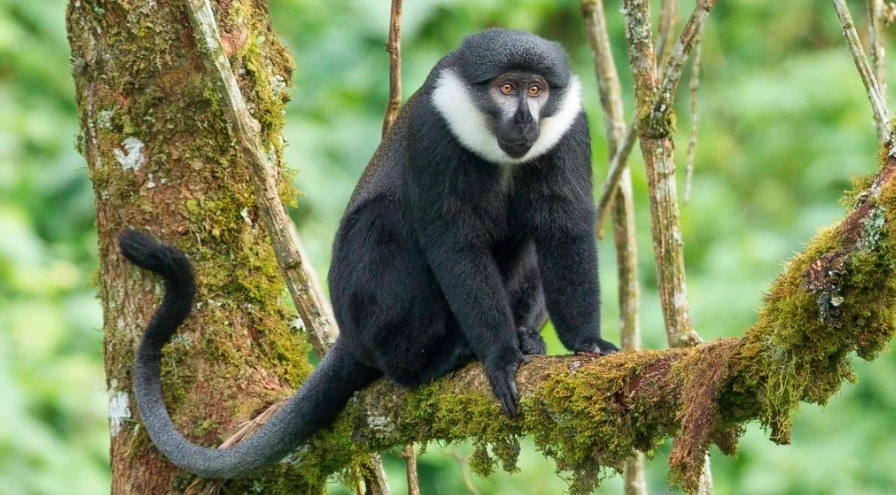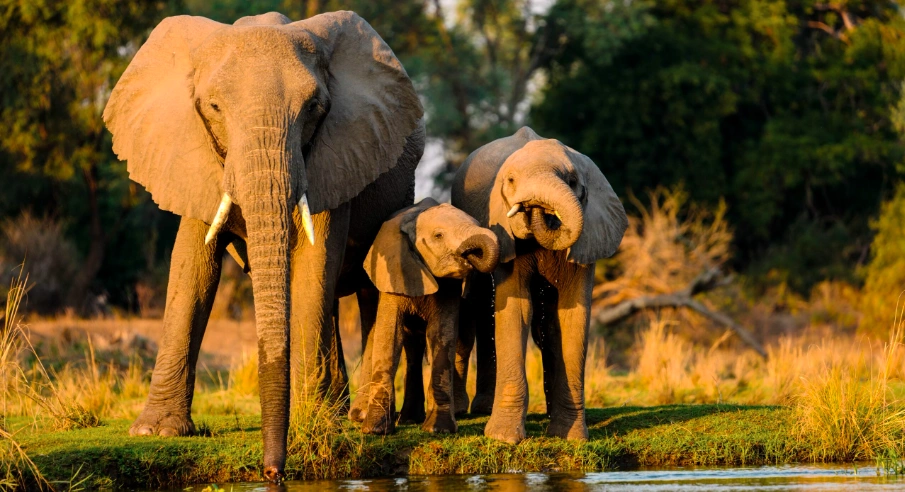Bwindi Impenetrable Forest National Park
Tucked away in the mist-covered highlands of southwestern Uganda lies one of Africa’s last true wilderness sanctuaries—Bwindi Impenetrable Forest National Park.
This UNESCO World Heritage Site is more than just a park; it’s a living relic of an ancient world, a place where biodiversity, cultural heritage, and rugged natural beauty collide. Home to nearly half of the world’s remaining mountain gorillas, Bwindi is not only a top destination for primate enthusiasts but also a haven for birders, botanists, adventurers, and anyone with a yearning for raw, untamed nature.
Encompassing over 330 square kilometers of dense rainforest, steep ridges, and deep valleys, Bwindi’s terrain is as breathtaking as it is challenging. But that’s what makes it magical.
This forest, believed to be more than 25,000 years old, has remained mostly unchanged while the world outside evolved—offering visitors a rare opportunity to step into an ecosystem that predates human civilization.
The Heart of Bwindi: The Mountain Gorillas
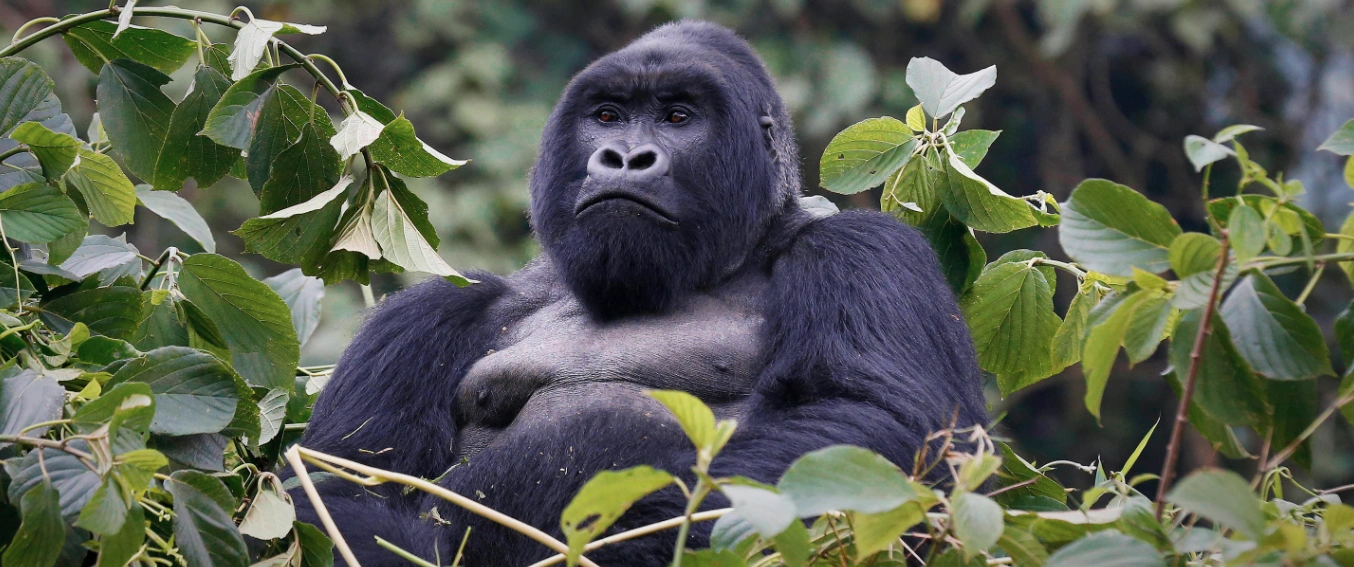
The undeniable stars of Bwindi are its mountain gorillas—majestic, intelligent creatures that live in tight-knit family groups led by powerful silverbacks. Bwindi protects approximately 460 mountain gorillas, making it the most densely populated gorilla habitat on Earth.
Unlike zoos or controlled reserves, encountering a gorilla in Bwindi means meeting it in its element—nestled within vines, lounging in mist-drenched undergrowth, or ambling through the shadows of fig and mahogany trees.
Each family has its own unique dynamic and behaviors, which you can observe up-close on guided treks that offer an awe-inspiring hour of interaction after locating them.
These gentle giants are not only a marvel to behold, but their conservation success story—going from critically endangered to endangered—is also a testament to Uganda’s focused preservation efforts and community involvement.
Gorilla Trekking in Bwindi
Gorilla trekking in Bwindi is not a passive sightseeing activity—it’s an immersive, physically demanding, and emotionally moving experience.
Your day begins at dawn, gathering at one of the park’s trailheads for a briefing. Armed with a walking stick and escorted by expert rangers and trackers, you’ll set off into the forest, hiking through slippery trails, thick vegetation, and steep ascents in search of a specific gorilla family.
The trek can last anywhere from 1 to 6 hours depending on the gorillas’ movements. But the reward at the end is worth every step: face-to-face time with one of our closest relatives in the animal kingdom.
Watching them groom each other, play, feed, or simply sit in silence is a surreal moment—humbling and deeply spiritual.
Permits are limited and must be booked in advance. They’re pricey, but every cent directly supports conservation and local communities.
Gorilla Habituation Experience
If one hour isn’t enough, Bwindi offers a rare alternative—gorilla habituation.
This is a more intimate and extended version of gorilla trekking, where you spend up to four hours with a gorilla family that is undergoing the gradual process of getting used to human presence.
Unlike standard treks, this experience immerses you in the research and conservation side of gorilla tourism. You’ll accompany rangers, trackers, and conservationists as they observe the group’s behavior, record data, and work to desensitize the gorillas in a non-intrusive manner.
This is not for the casual tourist—it’s for those who want to connect deeply with the primates and learn how protection of the species is carefully and patiently orchestrated.
What Makes Bwindi Special: Beyond the Gorillas
While gorilla trekking is the crown jewel, Bwindi’s appeal goes far beyond. This is one of Africa’s most biologically rich ecosystems, home to over 120 species of mammals, 348 species of birds, 220 species of butterflies, and more than 1,000 plant species.
Expect to encounter:
Forest elephants and giant forest hogs in the shadows
Red-tailed and L’Hoest’s monkeys swinging above the canopy
Chameleons, tree frogs, and other reptiles hidden along the undergrowth
You can also indulge in forest hikes, cultural immersions, birding excursions, and community tours that paint a broader picture of this wild, interconnected world.
Things to Do in Bwindi (Besides Gorilla Tracking)
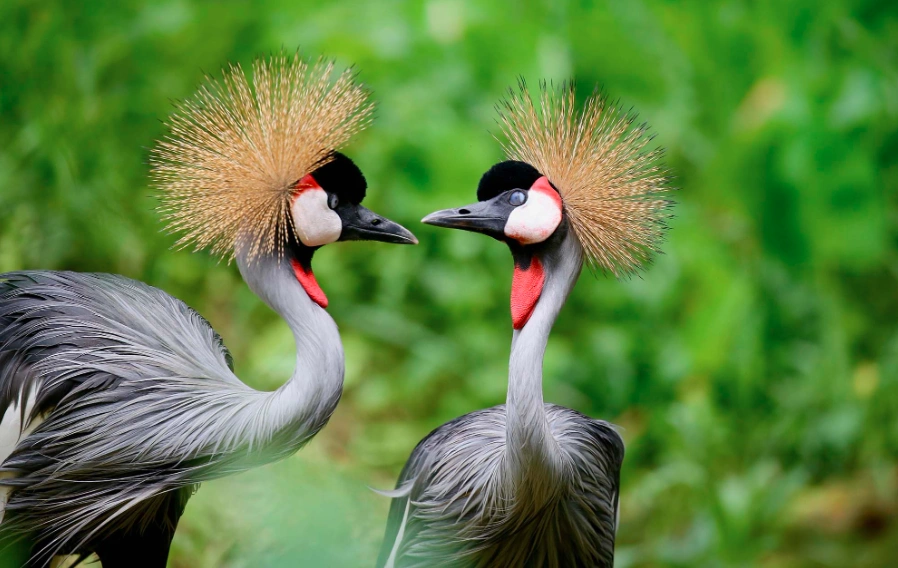
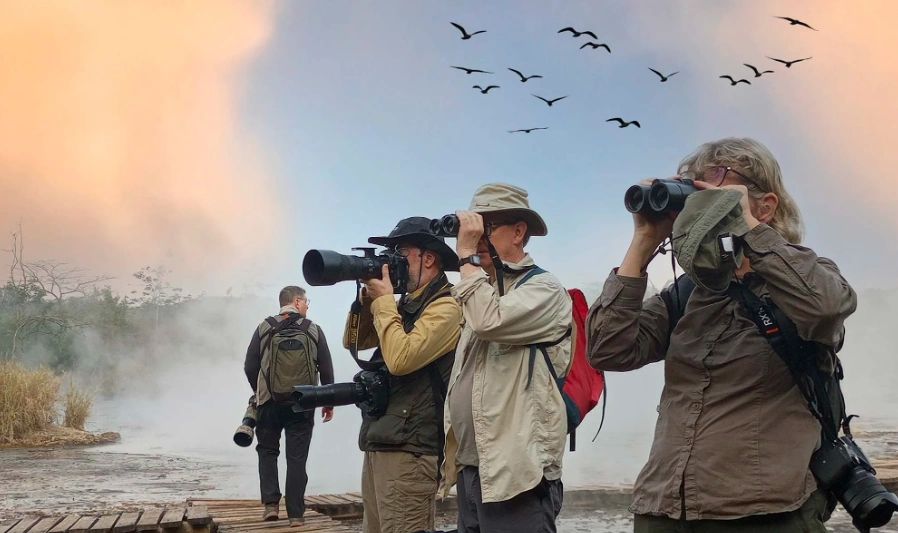
Bwindi is not a one-note destination. It’s a playground for eco-tourists and adventurers alike. Popular activities include:
a) Birding
With over 350 bird species—including 23 Albertine Rift endemics—Bwindi is a birder’s paradise. Top spots include:
Mubwindi Swamp Trail (Ruhija sector)
Bamboo Zone trails
Buhoma Waterfall Trail
b) Hiking & Nature Walks
Choose from short scenic strolls to multi-day treks:
Ivy River Trail (connects Buhoma and Nkuringo)
Kashasha River Trail
Mubwindi Swamp Trail
Rushura Hill Trail
Munyanga Waterfall Trail
c) Community & Cultural Encounters
Visit the Batwa pygmies, once forest dwellers turned cultural stewards. Learn their songs, dances, hunting skills, and medicinal plant knowledge through guided excursions.
d) Mountain Biking & Scenic Drives
Some sectors offer mountain bike trails or you can hire a driver to take you through rugged paths and into local villages for a broader exploration of life on the forest’s edge.
The Four Sectors (Trailheads) of Bwindi:
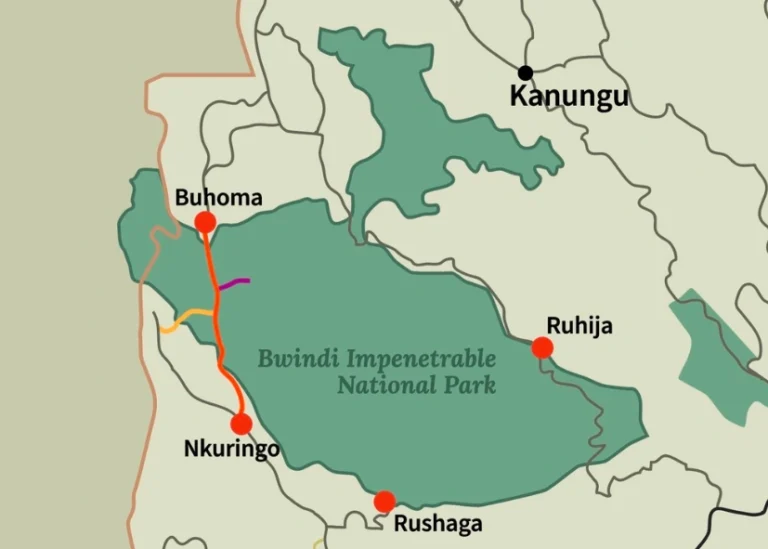
Bwindi is divided into four distinct trailheads or sectors, each offering a unique trekking experience, level of difficulty, and accessibility:
1. Buhoma (North)
This is the park’s oldest and most accessible sector—perfect for first-time trekkers. It’s known for its gentler terrain, diverse activities, and proximity to the Rushegura gorilla family. Buhoma also has the widest range of lodging options, from luxury to budget-friendly.
2. Ruhija (Northeast)
Ruhija is perched on a high ridge and is favored by birders and those looking for more challenging treks. It offers stunning forest vistas and fewer crowds. Gorilla groups here tend to roam deep into the park, which means a harder hike but a more remote experience.
3. Rushaga (North)
Located near Lake Mutanda, Rushaga has the highest number of gorilla families and is often favored for habituation experiences. Its terrain varies, allowing for both moderate and more strenuous hikes. It also boasts breathtaking views of the Virunga Volcanoes.
4. Nkuringo (Southwest)
Nkuringo is the most rugged and remote of the four—ideal for hardcore trekkers. The steep terrain offers some of the most physically demanding but rewarding gorilla tracking experiences. Views of the Virunga ranges and community encounters here are unmatched.
When to Visit Bwindi Impenetrable Forest National Park
Bwindi is a year-round destination, but the timing of your visit can influence the ease of trekking, your comfort, and even your photos.
Dry Season (June–August & December–February)
These are the most popular months for gorilla trekking. Trails are less muddy, visibility is better, and wildlife is more active. However, because demand is high, permits and accommodation often sell out months in advance—plan accordingly.
Rainy Season (March–May & September–November)
Expect heavy rains and slippery trails—but also thinner crowds, lower accommodation rates, and lush, emerald landscapes. Photographers love this season for its atmosphere. The gorillas don’t mind the rain, and sightings are just as rewarding—just bring waterproof gear and sturdy boots.
Pro Tip: Bwindi’s altitude means it’s cool throughout the year. Nights can get chilly, especially in higher elevation sectors like Ruhija and Nkuringo, so pack layers.
Getting to Bwindi Forest National Park
Getting to Bwindi is an adventure in itself—and one that showcases Uganda’s rural beauty.
By Air:
Daily scheduled flights from Entebbe International Airport (EBB) to Kihihi or Kisoro Airstrips get you close to the park. From there, it’s a 1–2 hour drive to your lodge depending on the sector.
Kihihi is best for Buhoma.
Kisoro serves Nkuringo and Rushaga.
Ruhija is accessible from either, with longer drive times.
AeroLink Uganda and Bar Aviation are the two main domestic carriers.
By Road:
The drive from Kampala or Entebbe to Bwindi takes 8–10 hours. While long, the journey offers scenic views of tea plantations, crater lakes, and rolling hills. Popular routes include:
Kampala – Mbarara – Kabale – Buhoma (via Kihihi)
Kampala – Ntungamo – Rukungiri – Buhoma
Kampala – Kabale – Kisoro – Nkuringo/Rushaga
You can hire a private driver, book through a tour operator, or use public buses to nearby towns and arrange local transport from there.
Accommodation in Bwindi: Where to Stay
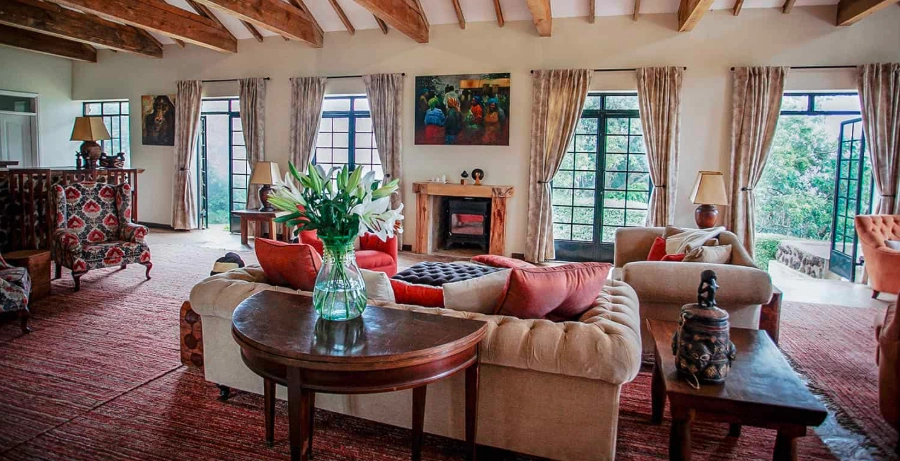

Whether you’re traveling on a shoestring or splurging on luxury, Bwindi caters to all types of travelers. Lodges tend to cluster around the four sectors, so choosing where to stay usually depends on your assigned gorilla trekking permit.
Luxury Lodges
Clouds Mountain Gorilla Lodge (Nkuringo): Uganda’s highest lodge, offering panoramic views and exceptional service.
Sanctuary Gorilla Forest Camp (Buhoma): Intimate, secluded, and sometimes visited by gorillas themselves.
Mahogany Springs Lodge (Buhoma): Beautifully designed with riverfront views and high-end touches.
Mid-Range Options
- Ichumbi Gorilla Lodge (Rushaga): Great views, warm hospitality, and a comfortable stay close to the starting point.
- Gorilla Mist Camp (Ruhija): Cozy chalets surrounded by forest and mountain mists.
- Buhoma Haven Lodge (Buhoma): Great value with spacious rooms and eco-conscious design.
Budget-Friendly Stays
- Bwindi Backpackers Lodge (Buhoma): Rustic and basic, but full of charm and social energy.
- Broadbill Forest Camp (Ruhija): Affordable tents with great birding nearby.
- Rushaga Gorilla Camp (Rushaga): Simple and serene, set into the hillside.
Tip: Booking your lodge close to your trekking sector saves travel time on the day of your hike.
The Cultures and People of Bwindi

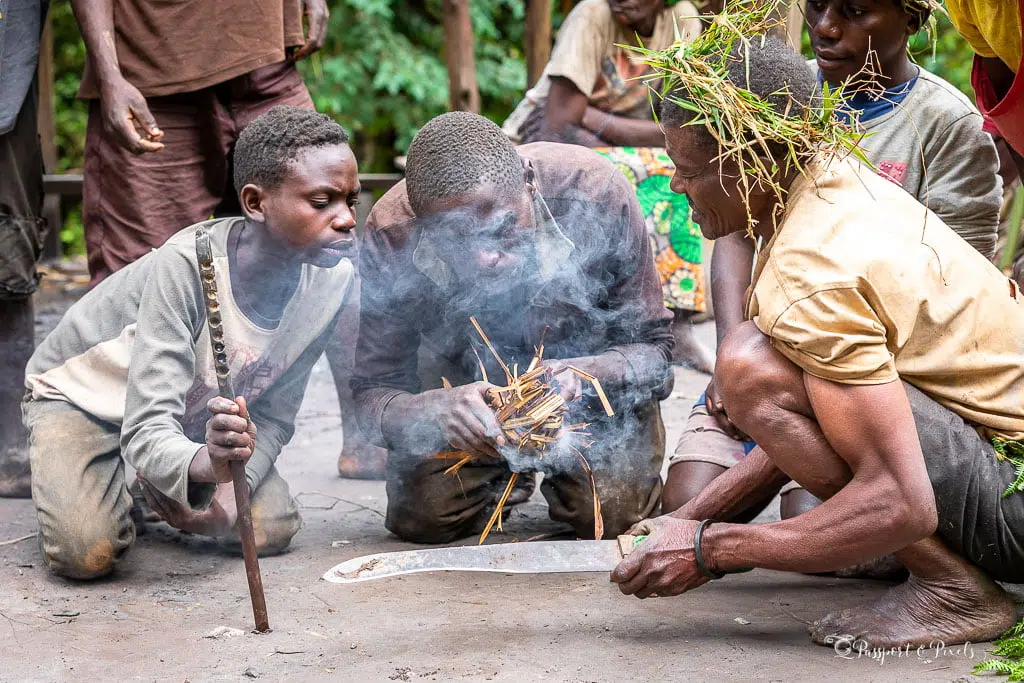
Bwindi is not just a forest—it’s home to vibrant communities whose lives are deeply connected to the land. Surrounding the park are two main cultural groups:
The Bakiga
Known for their terraced farming on the hillsides and spirited cultural dances, the Bakiga are the dominant tribe around Bwindi. Many work in conservation, tourism, and community development.
The Batwa
The Batwa, often called the “keepers of the forest,” are an indigenous pygmy tribe who lived as hunter-gatherers in Bwindi for centuries. Displaced during the creation of the park, many now work in tourism and cultural preservation.
Batwa cultural experiences offer authentic, guided interactions where visitors can:
Learn about traditional hunting techniques
Explore forest medicine and rituals
Watch performances of song and dance
Hear stories passed down through generations
Supporting these tours provides both insight and much-needed income for the Batwa people.
Geography, Geology, and Ecology of Bwindi
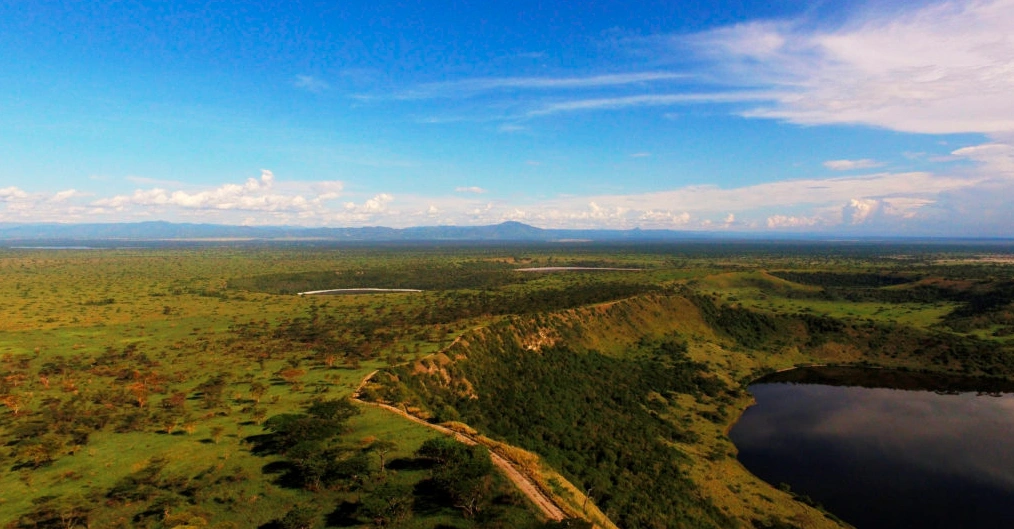
Bwindi sits along the western edge of the Albertine Rift Valley, straddling steep, forested slopes and deep river gorges. Its name—**“Impenetrable”—**isn’t poetic exaggeration.
The thick undergrowth, tangled vines, and steep ridges make access challenging—but all the more rewarding for it.Bwindi is not just a forest—it’s home to vibrant communities whose lives are deeply connected to the land.
Surrounding the park are two main cultural groups:
Key Facts
Altitude Range: 1,160m (Ishasha gorge) to 2,607m (Rwamunyonyi Peak)
Average Rainfall: Over 1,500mm annually
Temperature Range: 7°C to 20°C
Geologically, Bwindi sits on ancient Precambrian rock formations, rich in quartzite and schist. The terrain is a mix of steep volcanic ridges and swampy valleys—perfect for biodiversity.
Ecologically, Bwindi is a transitional zone between lowland and montane forest. This makes it one of the most ecologically diverse places on the continent, supporting a mix of Eastern Afromontane species and lowland rain forest flora and fauna.
The Ancient History of Bwindi Forest
Bwindi is believed to have existed continuously for over 25,000 years, making it one of the oldest rainforests in Africa.
During the last Ice Age, while other forests shrank or disappeared, Bwindi endured—becoming a refuge for countless species.
Its name, “Bwindi”, means “place of darkness” in the local language, referencing the deep shade and density of the forest. To the Batwa, it was a sacred space—a living provider of food, shelter, medicine, and spirit.
Since becoming a national park in 1991, Bwindi has evolved from a threatened ecosystem to a global model for conservation through community engagement.
Gorilla tourism has brought new infrastructure, education, healthcare, and income to local residents, making them invested stakeholders in the forest’s future.
A Conservation Success Story
Mountain gorillas were once on the brink of extinction, with just a few hundred remaining in the wild.
Thanks to decades of collaborative efforts between the Uganda Wildlife Authority, local communities, international NGOs, and responsible tourism, that number is steadily rising.
Bwindi has become a flagship success story in how conservation can work hand-in-hand with community empowerment. Tourists, by purchasing permits and staying in eco-lodges, directly fund anti-poaching patrols, veterinary care, education, and reforestation projects.
This is why visiting Bwindi isn’t just a travel experience—it’s a contribution to something larger than yourself.


